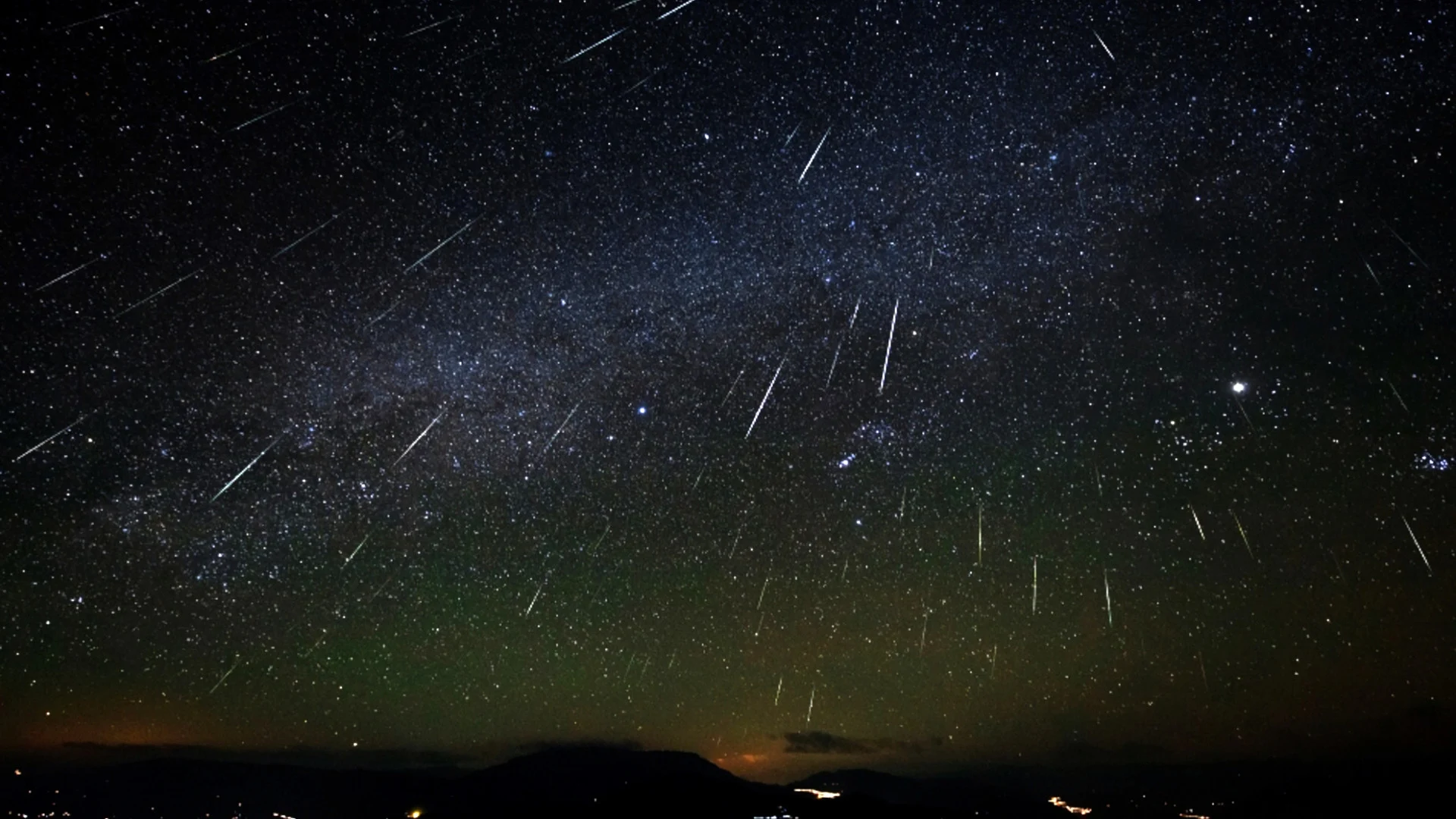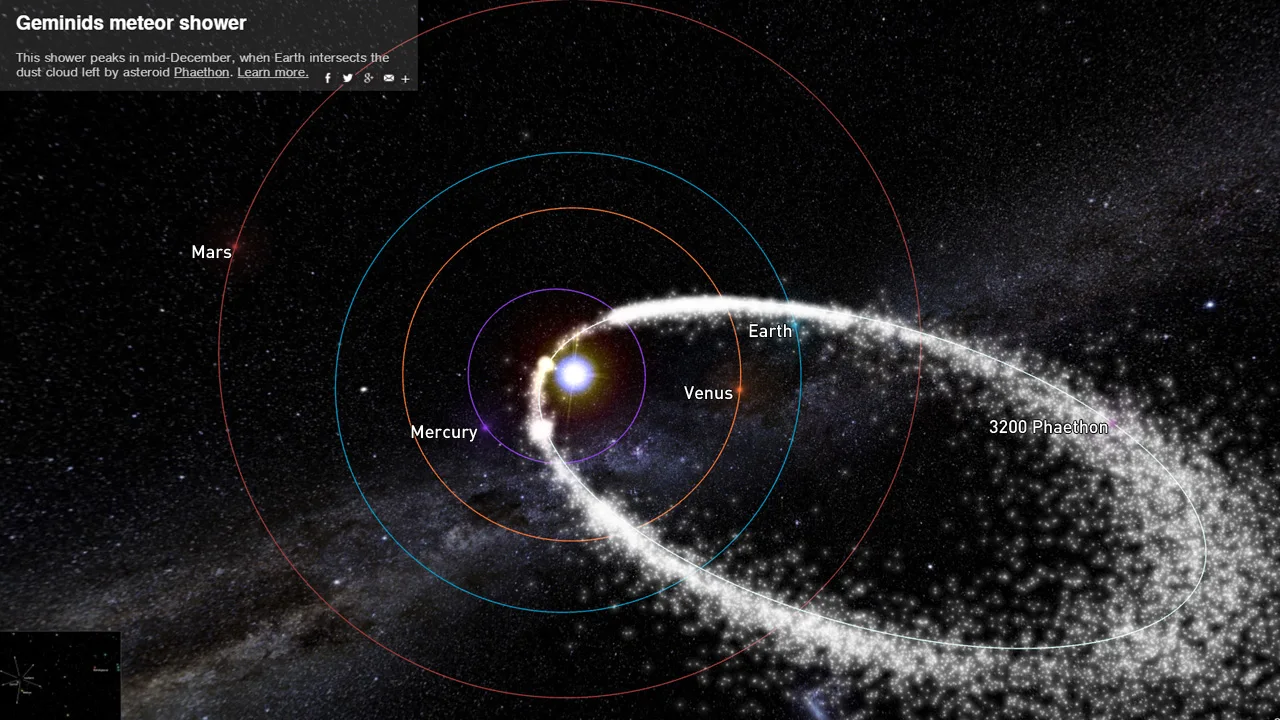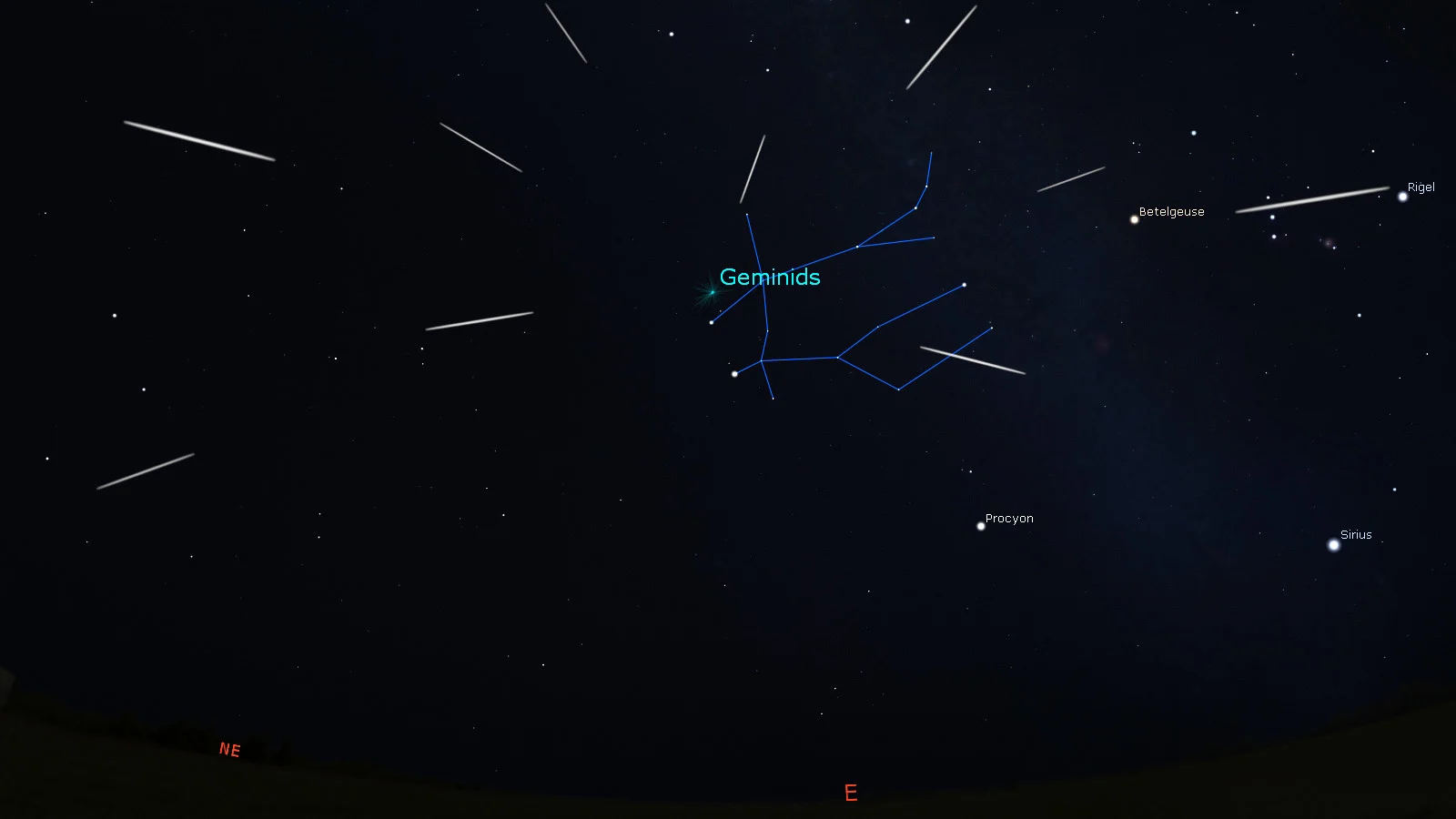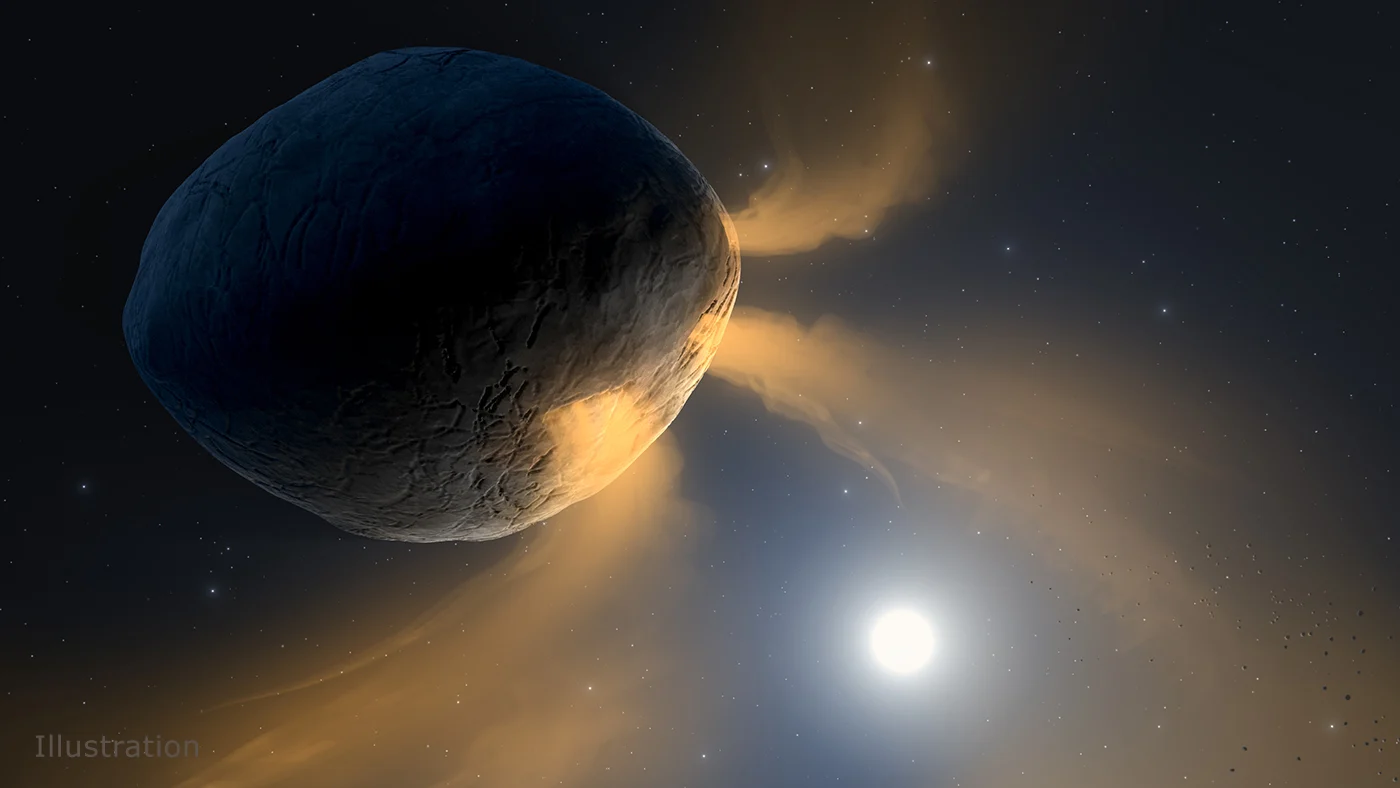
Look up! The Geminid meteor shower lights up the sky tonight
Eyes to the sky on the night of December 13-14 for what could be an exceptional display of colourful green meteors flashing by overhead!
Have clear skies Wednesday night? Head outside to somewhere dark for the peak of the Geminids, one of the year's best meteor showers.
In our yearly trip around the Sun, Earth encounters random bits of rock and dust left over from the solar system's origin. When one of these meteoroids plunges into the atmosphere, it produces a flash of light in the sky that we call a meteor.
At certain times of the year, though, we pass through concentrated streams of meteoroids left behind by different comets or asteroids as they orbit the Sun. When Earth sweeps through one of these streams, it results in dozens to hundreds of meteors originating from the same part of the sky throughout the night. This is known as a meteor shower.

This simulation shows the orbit of 'rock comet' 3200 Phaethon, which is littered with gravel and dust that it leaves behind as it travels around the Sun. The size of the debris is exaggerated here to make it easier for us to see. Credit: Meteorshowers.org/Scott Sutherland
Right now, we are in the midst of the Geminid meteor shower, which is active from early to late December and reaches its peak on the night of December 13-14. Along with the January Quadrantids and the August Perseids, this is one of the strongest meteor showers of the entire year.
According to the Royal Astronomical Society of Canada (RASC) and the International Meteor Organization (IMO), the Geminids can produce 120-150 meteors per hour during their peak. However, NASA cautions that the average observer watching from under clear, rural skies will probably spot roughly half that number, or about 1 every minute.

This simulated view of the night sky shows the radiant of the Geminid meteor shower on the night of December 13-14. Credit: Stellarium/Scott Sutherland
WINTER 2024: El Niño will play a critical role in the weeks ahead
Besides the number of meteors from this shower, the Geminids also produce a very colourful display in the sky.
"Most meteors appear to be colourless or white, however the Geminids appear with a greenish hue," says Bill Cooke, the head of the Meteoroid Environment Office at NASA's Marshall Space Flight Center. "They're pretty meteors!"
This added colour is due to the source of the Geminids — a bizarre asteroid named 3200 Phaethon which could be the rocky remains of an extinct comet.
READ MORE: How to get the most out of meteor showers and other night sky events

This illustration shows what a 'rock comet' like 3200 Phaethon may look like. Credit: NASA
This year's timing for the Geminids peak is also perfect, as it occurs just after the New Moon.
With only a thin Crescent Moon in the sky on the night of the peak, which sets very soon after the Sun goes down, it will leave the entire night without any competing light sources in the sky to diminish the meteoritic display.
(Thumbnail image courtesy Jeff Dai/NASA)
